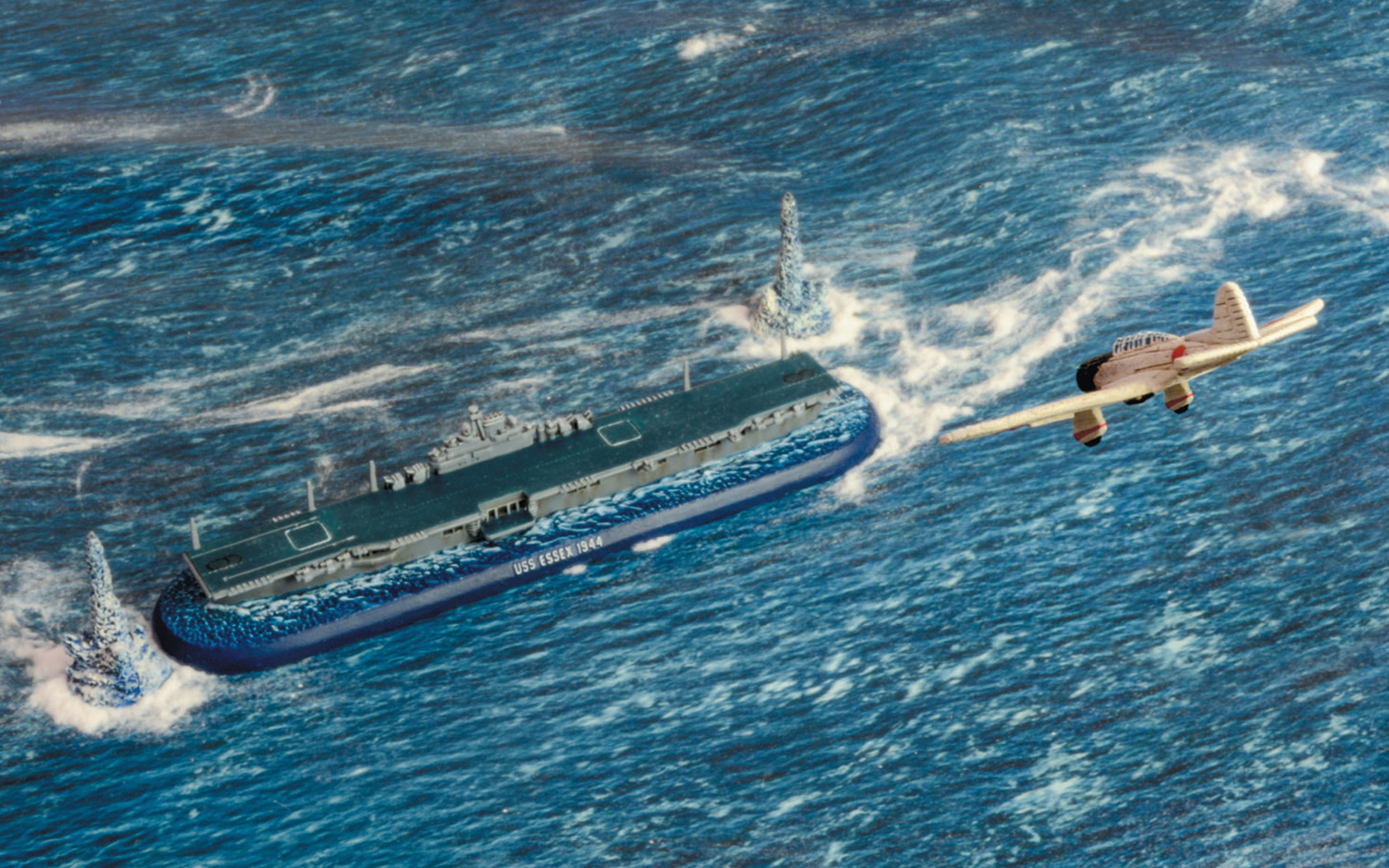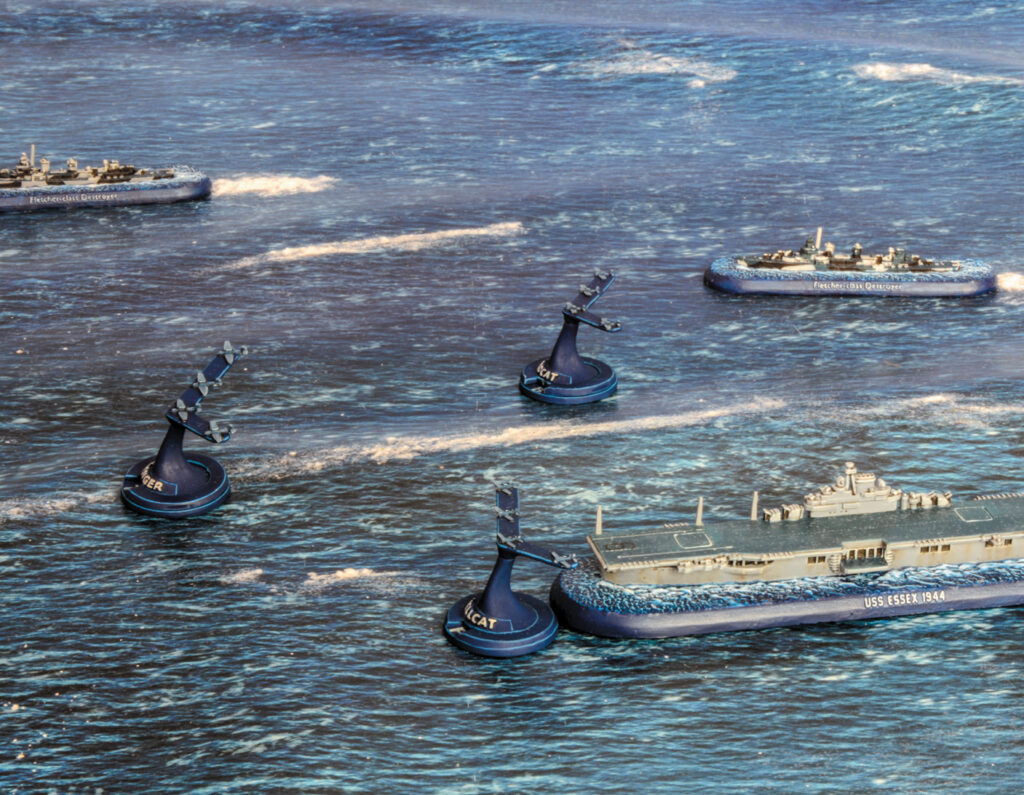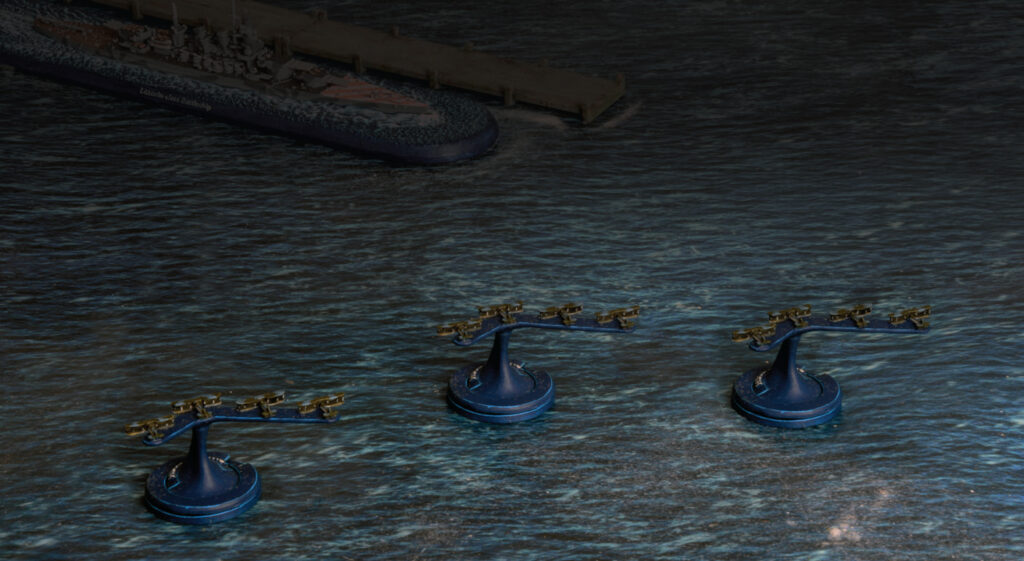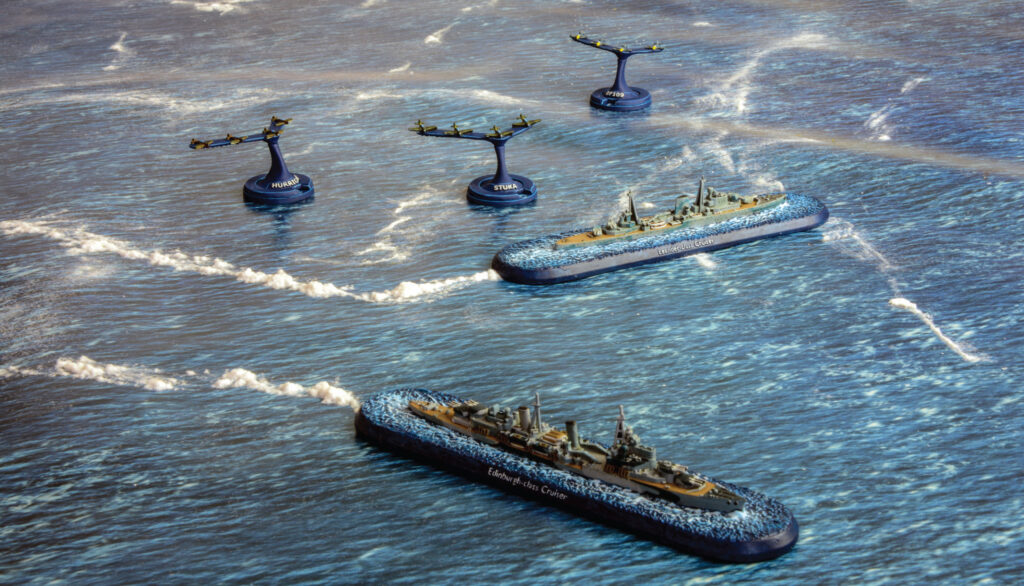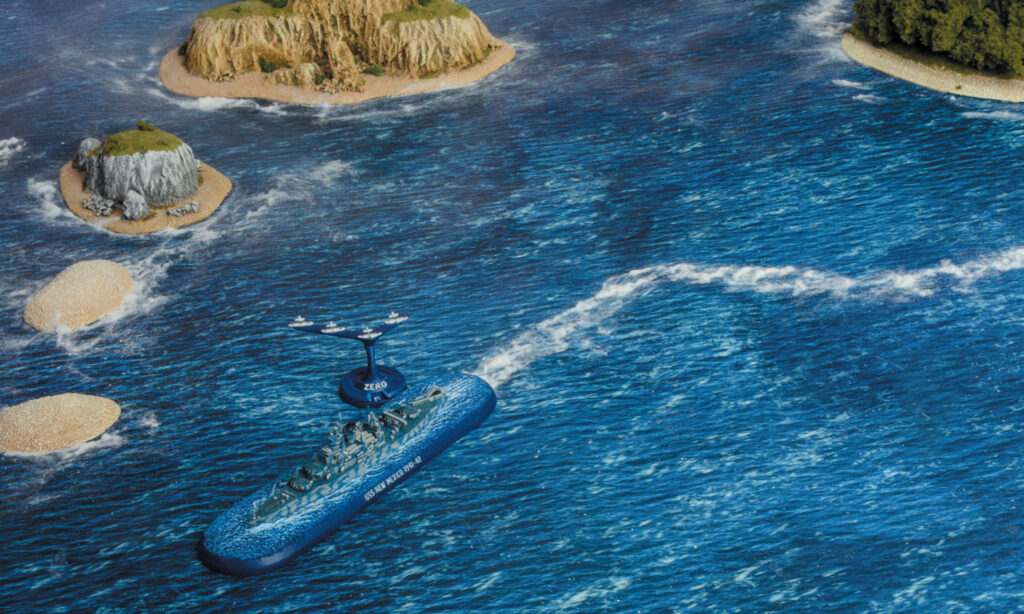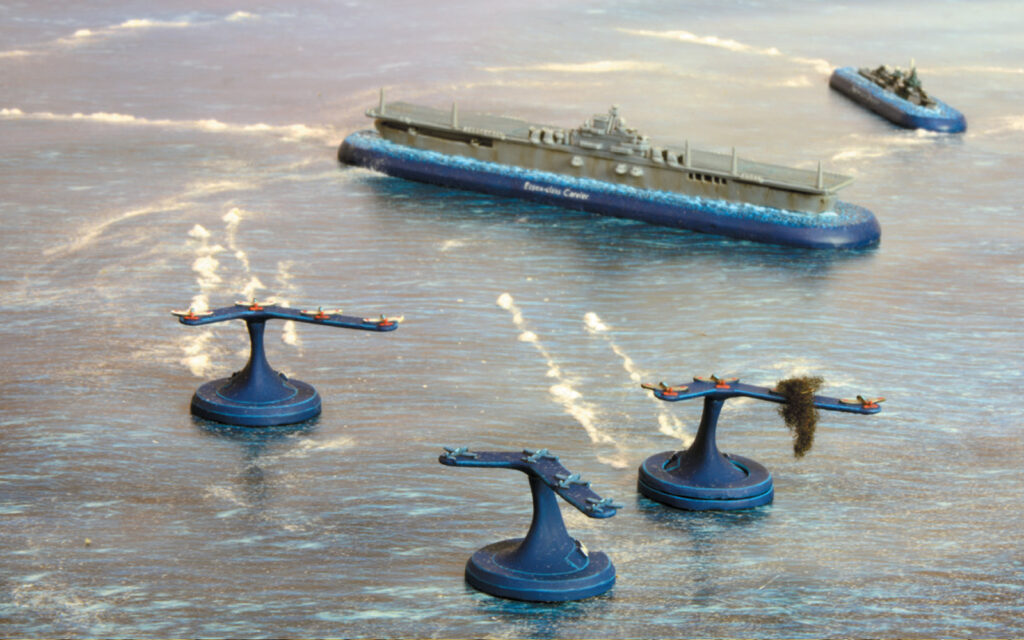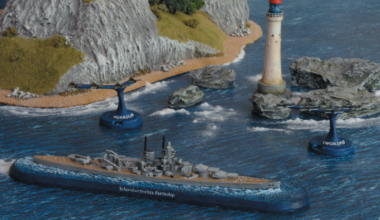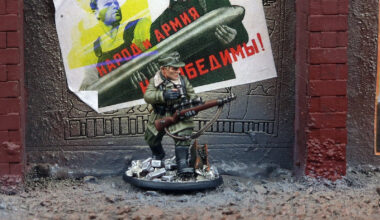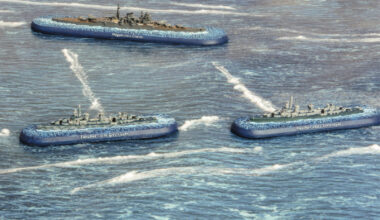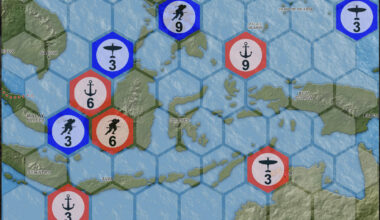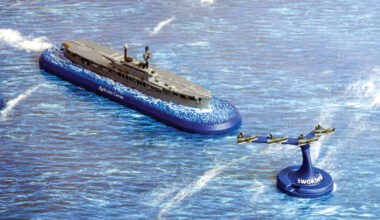As much as I love the might and romance of the battleships, any student of naval history must admit that by late 1941, the era of the big-gun ships was rapidly coming to a close. While more advanced submarines certainly posed a threat, as evidenced by U-331’s sinking of HMS Barham, the final nail in the coffin of battleship supremacy was undoubtedly the rise of carrier-based naval aviation.
Having evolved from the hotchpotch of Treaty-era battleship conversions and compromise designs (mandated by the tonnage limits of the Washington Naval Treaty), by the outbreak of the Second World War the aircraft carrier was firmly ensconced in the strategic plans of many admirals, particularly in the US and Imperial Japanese navies. By the end of the war in the Pacific, the carrier was the naval weapon of choice. Indeed, it would not be unfair to argue that the US Navy’s vast carrier fleet was the central reason for the defeat of Japan. American aircraft ranged far across the Pacific, crippling Japanese shipping and supporting the island-hopping advance of the US Marines as they pushed towards the Japanese home islands.
In the Atlantic theatre, the smaller ‘escort’ carriers proved crucial in closing the so-called ‘Mid-Atlantic Gap’, providing vital supply convoys with all-important air cover to defend against marauding German U-Boats. While there were no great carrier battles like those fought between the USN and IJN, carrier-based Swordfish torpedo bombers of the Fleet Air Arm proved decisive in the Royal Navy’s vengeful pursuit of Bismarck following her sinking of HMS Hood. Likewise, in the Mediterranean, British carriers provided air cover to the critical convoys heading for Malta and Egypt.
While gun duels between capital ships and volleys of torpedoes from destroyers form the heart of most Victory at Sea engagements, the wonderfully in-depth rulebook provides an excellent set of rules for using all manner of aircraft – both carrier- and land-based – which adds a fantastic extra layer to your naval tabletop battles. Whether you’re flying under the Pacific sun or battling through foul weather in the North Atlantic, there’s no shortage of targets to be found!
Including Aircraft in Victory at Sea
On the tabletop, aircraft add a fascinating new dimension for budding admirals to master. With fighters, bombers, dive-bombers, torpedo bombers and observation flights to choose from, each with their own distinct tasks, a canny planner can alter their force composition to suit the task at hand.
Carriers in a player’s fleet have the maximum number of Flights they may carry and the points values of these Flights are included in their points value. Players are free to choose whichever aircraft they wish so long as the number of Flights does not exceed their carriers’ maximum, and only Flights that are listed as being carrier-capable are chosen.
Aircraft may also be included without a carrier in the fleet. These aircraft are assumed to have taken off from land bases or carriers much further from the battle. Ordinarily, you may only have a maximum of a quarter of your fleet’s total points value represented by Flights that are not based on one of your carriers, unless otherwise stated by a scenario.
Aircraft perform a number of different functions in game, from dogfighting and bomber escort duties to ship and surface target attacks. An aircraft’s efficacy at a particular task is defined by its type. The game takes into account fighters, bombers, dive-bombers, torpedo bombers and even Kamikaze aircraft.
Let’s take the US Vought F4U-1 Corsair as an example:
We can see that the Corsair is not capable of damaging enemy vessels and that its primary role is that of engaging enemy aircraft. They are best employed as interceptors against enemy bombers and their escorts.
Carrier Operations
While land-based fighters are certainly useful (it’s very hard to sink an island, after all, and the Pykrete thing didn’t really work out), for engagements in the open ocean there really is no substitute for an aircraft carrier or two. While not able to carry all types of aircraft (Doolittle’s heroics off of USS Hornet notwithstanding), the ability to effectively take a small air force anywhere in the world alongside the rest of your fleet is not to be underestimated.
The great problem with carriers is, of course, their vulnerability in a gunfight – while the Taffy 3 taskforce’s determined efforts off Samar were truly exceptional, it’s generally considered unwise to let your flat-tops anywhere near battleships or cruisers. To this end, a smart admiral will make use of the Deep Deployment rule where possible, holding their carriers off the table and launching airstrikes at the very edge of their range. Of course, nowhere is truly safe, and you must always be wary of enemy aircraft trying the same thing against your far-off carriers – make sure your Combat Air Patrols are out at all times and keep your eyes on the skies!
If you must have your carriers in the danger zone (I’m not apologising for this one, you can’t make me), be sure to keep them well-screened with escorts and keep an eye on the wind – remember, to launch and recover your squadrons, you’ll need to be sailing into the wind to give the pilots every possible help you can! Aircraft sadly make for very poor submarines, so make sure they’ve got somewhere safe to land before they run out of fuel!
Even battleships can get in on the action, with observation planes launching from turret-top catapults to aid in spotting for over-the-horizon shooting or to scout ahead for the enemy fleet. Every advantage counts in Victory at Sea, so make sure to dominate the air while your fleet scours the sea!
Finally, for those in the Pacific theatre, keep your eyes peeled for the dreaded Kamikaze. These fanatically loyal attackers must be intercepted well away from your ships, before they can plunge down to deliver their deadly explosive payloads with terrifying accuracy. Anti-aircraft fire alone won’t reliably stop them, so make sure you’ve got plenty of fighters airborne and ready to pounce.
Carriers & Aircraft Flights
Since the game’s launch, the ship roster has grown to incorporate a greater variety of carriers and aircraft flights, making carrier battles in Victory at Sea a more viable prospect – which will only increase further as the range continues to expand.
